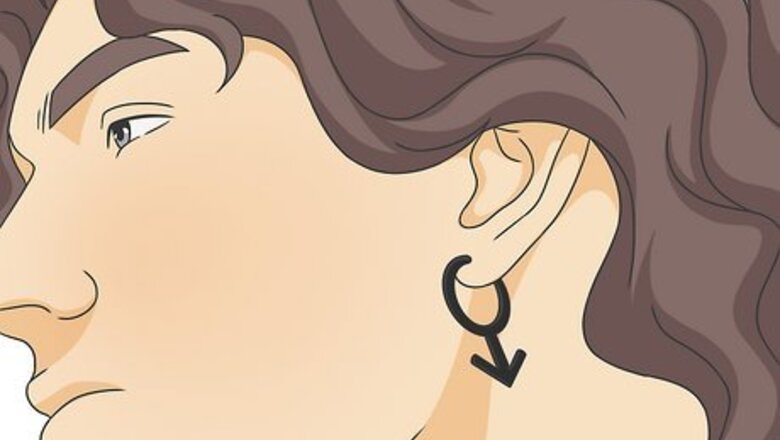
views
- In the 1980s, straight men pierced their left ear to signal they were heterosexual, but most people do not associate this piercing with their sexuality anymore.
- Today, a left ear piercing represents uniqueness, creativity, and self-expression, and it’s commonly used to make a fashion statement or reject traditional gender roles.
- According to ancient Chinese beliefs, a left ear piercing will protect you from bad luck, and piercing an acupuncture point may improve your blood circulation.
What does a left ear piercing say about your sexuality?
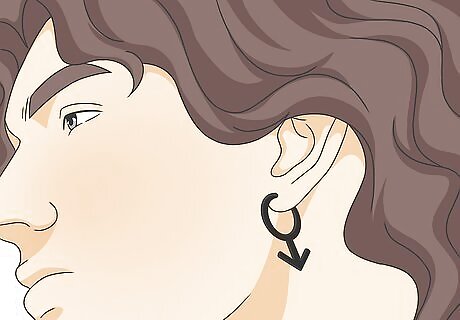
In the 1980s, some men pierced their left ear to signal they were straight. During the 1970s, the right ear was known as the “gay ear” because members of the LGBTQ+ community used it to indicate their sexual preferences. It was a discreet way to come out as gay and talk to other members of the community. By the 1980s, this knowledge became widespread, and straight men who wanted a single piercing chose the left ear to clarify they were heterosexual. By the late 1990s, the idea of the “gay ear” slowly disappeared, and a single ear piercing became a symbol of rebellion and punk rock. Today, most people do not associate a left ear piercing with sexuality. Some people might wear it to show off their pride in the LGBTQ+ community, while others use it to express nonconformity. However, it doesn’t need to have meaning either, so feel free to rock one because it looks good on you!
Left Ear Piercing & Gender

For men, a left ear piercing may challenge traditional gender norms. Some men wear a left ear piercing to rebel against society’s gender roles and expectations. Since wearing earrings is traditionally considered feminine, sporting a pierced ear allows guys to reject the status quo and challenge the idea of masculinity.
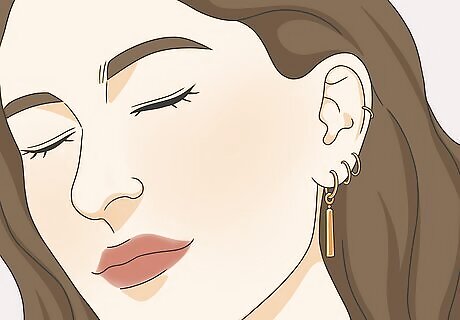
For women, a left ear piercing can represent individuality and uniqueness. Many women get a single ear piercing to make a bold fashion statement or assert their identity. It’s a powerful way to be their authentic selves and feel confident, no matter what they look like. Since it breaks free from the traditional practice of piercing both ears, it may also be a way to reject traditional beauty standards or conformity.
Spiritual Meanings
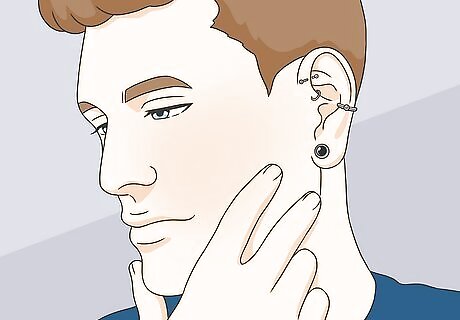
A left ear piercing represents uniqueness and self-expression. While many people wear earrings to symbolize their faith and culture, wearing an earring on the left ear is one of the most popular ways to express your individuality and personality. Earrings come in a variety of shapes, sizes, and designs, allowing you to experiment with different styles and showcase your creativity. A left ear piercing celebrates your uniqueness and makes a fashion statement. Wearing a single earring can symbolize simplicity and understated elegance, especially if you have a minimalist lifestyle.
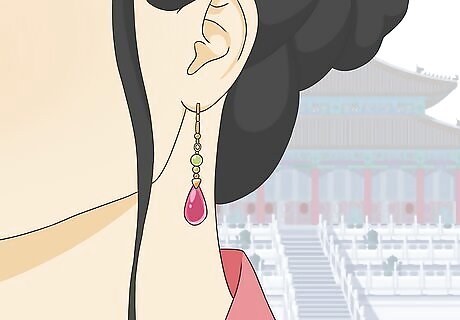
Piercing your left ear may protect you against bad luck. According to ancient Chinese beliefs, a left ear piercing signifies you are in danger, but wearing an earring will prevent a life-threatening experience. Archaeological findings show that ancient women preferred to wear a single earring in the left ear, instead of a pair, during the Warring States Period, Qin, and Han dynasties. Some ancient tribes believed evil spirits possessed humans through the ears, so they wore earrings to ward them off.

Left ear piercings are believed to have healing properties. Based on traditional Chinese medicine, ear piercings can offer a variety of health benefits, depending on their placement and material. Piercing your acupuncture points may improve blood circulation and relieve pain (since it provides constant stimulation to those areas). The type of metal is also believed to impact your mood: a gold earring is said to be energizing, while a silver earring is thought to have a sedative effect. One of the most popular piercings is the daith, which is believed to relieve migraines. Piercing the conch is said to treat chronic pain, while getting an industrial piercing is said to treat allergies. The classic lower lobe piercing is thought to reduce anxiety, while the mid lobe is believed to improve eyesight. An upper lobe piercing may relieve symptoms of depression.
Historical & Religious Significance
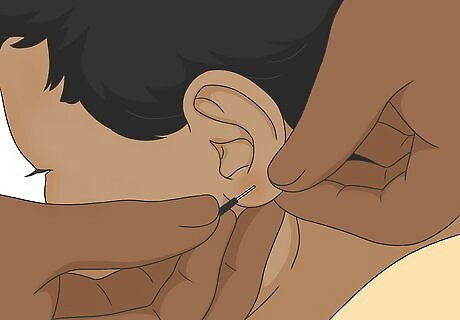
In Hinduism, piercing the left ear is part of a religious ritual. Karnvedh Sanskar is an ear piercing ceremony, and it is one of the 16 sacraments, rituals, and sacrifices of Hinduism. Hindus believe piercing the ear opens the inner eye so the child can receive sacred sounds, flushing out sin and protecting their spirit. Girls pierce their left ear first because it is considered the path of femininity, while boys pierce their right. Karnvedh Sanskar is usually performed during the sixth or seventh month or the third, fifth, or seventh year after birth. Hindus also believe ear piercing prevents disease and helps maintain the regularity in the menstrual cycle for girls.
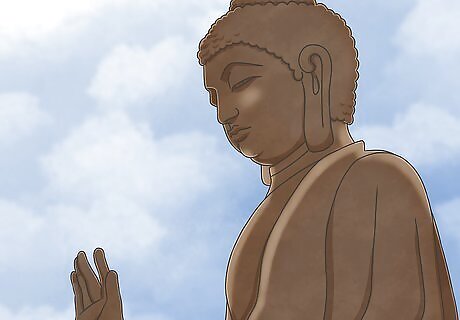
According to Buddhism, ear piercings represent wisdom and compassion. The Buddha is depicted with large, stretched ears because he is the enlightened one. He is believed to hear the sound of the world, and as part of tradition, some Buddhists wear a small stud or hoop in their left ear.
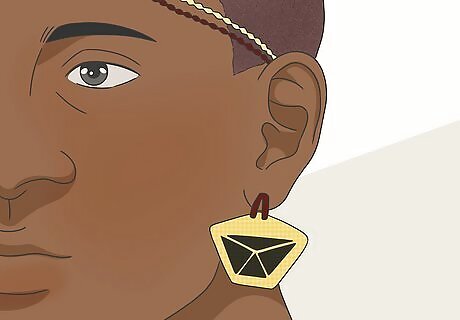
In Africa, left ear piercings symbolized maturity or tribe identity. Some ancient African tribes wore a single ear piercing to represent their age or denote membership in a certain community. Ear piercing was often done as a traditional ritual, signifying the change from childhood to adulthood, and young warriors usually pierced their ears to further decorate themselves and exhibit bravery. In ancient Egypt, ear piercing was a sign of wealth, with many men wearing a left piercing to indicate their position as priests or rulers.
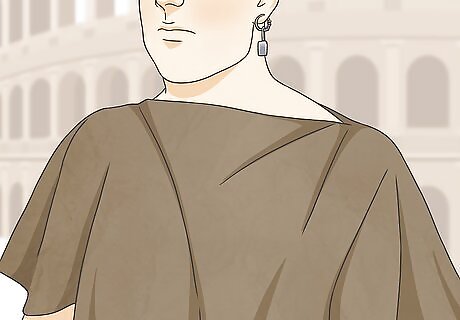
In Ancient Rome, ear piercings were tied to servitude and social status. While earrings made of precious metals and stones signified the nobility of Italy’s coastal regions, it was a sign of servitude in the north. Male and female slaves wore earrings to indicate they belonged to the lower classes, and in the local Jewish community, it was a symbol of prostitutes or outsiders.
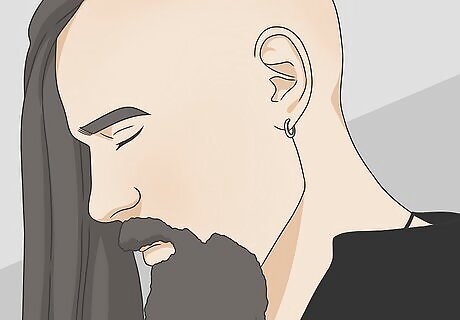
To the Cossacks, a left ear piercing indicated the only male of the family. In the 14th and 15th centuries, the Cossacks (a self-governing southern Russian population) used earrings to signal who was the sole provider for their families. Due to his family situation, a man with a left ear piercing would receive extra care during battle because he had other mouths to feed. The Cossacks were supposed to be protective of men with left ear piercings because if they died, their bloodline would also die.
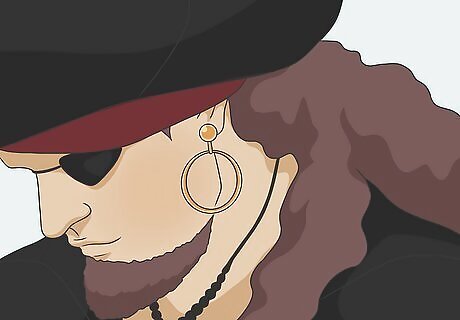
According to legend, pirates wore a left ear piercing for good luck. There are many theories why pirates wore a single ear piercing, but the most popular myth is that it prevented drowning and seasickness. Other people claim the precious metal in the earring would pay for a proper burial if the pirate’s body washed up on foreign shores, while another common belief is that it was a form of rebellion since only nobility could wear certain types of jewelry.


















Comments
0 comment